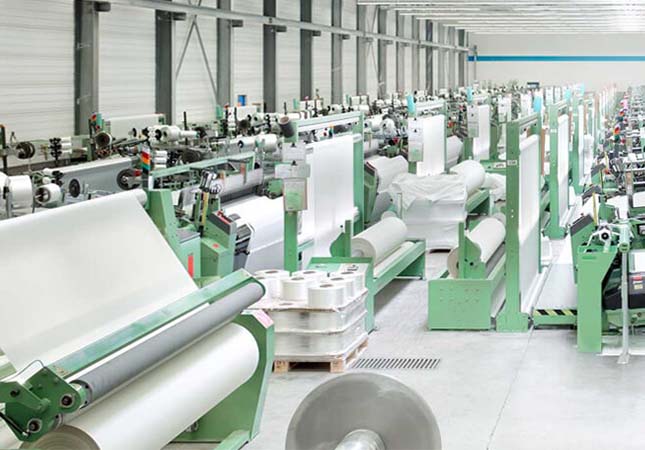Based on market research and reports, the textile machinery automation equipment market is witnessing a rapid surge. Grand View Research predicts that the market value of textile machinery automation will soar to $71.86 billion by 2028, with an impressive compound annual growth rate (CAGR) of 7.8%.
The automated cutting systems market is experiencing a notable upswing. Market Research Future reveals a projected CAGR of 6.51% for this sector, set to reach $2.702 billion by 2023.
Similarly, the automated sewing machines market demonstrates a promising growth trajectory. Technavio's analysis indicates a projected CAGR exceeding 10% for this segment, fueled primarily by the impetus of industrial automation and the demand for streamlined production.
Overall, the textile machinery automation equipment market displays a steadfast growth pattern, predominantly propelled by the desire for enhanced production efficiency, diminished labor costs, and elevated product quality. The continuous march of technological advancements and innovative breakthroughs in automation equipment assures a promising future for the textile industry's automation landscape.

Equipment Instance: AGV in the Textile Industry
Based on the latest findings from the New Strategy Institute for Robotics Industry, the annual sales of forklift AGV robots in China have consistently surged by more than 50% since 2015. The fervent market demand has fueled the emergence of exemplary enterprises operating within this specialized field.
In 2019, the Chinese market witnessed a remarkable milestone as the mobile robot (AGV) sector attained a size of 6.175 billion yuan, encompassing industrial AMRs, and experienced a remarkable year-on-year growth rate of 45.29%. Moreover, the compound annual growth rate of China's mobile robot (AGV) market during the period spanning 2014 to 2019 stood at an impressive 54.56%. This recent surge in growth rate underscores the substantial achievements made by the nation's manufacturing industry in its journey towards intelligent development.
Commencing in 2016, the upsurge in newly added mobile robots (AGV) has been notable. By the conclusion of 2019, the cumulative number of freshly introduced AGV robot products had reached an impressive tally of 33,400 units, signifying a year-on-year growth rate of 12.84%. Additionally, the compound annual growth rate for new additions of mobile robots (AGV) in China during the period from 2014 to 2019 reached a commendable 59.85%.
Presently, the utilization of AGV robots in China primarily centers around production manufacturing, logistics transportation, and inspection domains. The automotive industry, along with home appliance manufacturing and other sectors, stands as the principal demand markets for AGV within the country. While both industries exhibit a consistent need for AGV, there is a growing emphasis on product intelligence and automation.
However, upon examining the development trends in the top three application areas, the scale of China's automotive manufacturing and sales is showing signs of decline. Although the increasing penetration rate of AGV contributes to expanding the market size in the automotive industry, the constraints imposed by limited new market opportunities in the automotive sector weaken the future outlook for AGV robots, especially when compared to the home appliance manufacturing and logistics industries.
At the outset of 2020, the outbreak of the COVID-19 had a significant impact on the domestic manufacturing and logistics sectors, causing disruptions within the mobile robot (AGV) industry. Particularly during the initial quarter, a few enterprises faced severe challenges to their survival. However, with the effective control of the domestic epidemic and the accelerated resumption of work and production, the domestic AGV industry gradually regained its momentum. Enterprises possessing strong brand influence and visionary technologies are poised to expedite their market share in the downstream recovery phase, expanding their profitability through technological advantages and strategic mergers and acquisitions.
Presently, as the epidemic gradually recedes, not only China but numerous countries across the globe have resumed production, resulting in a notable resurgence in the AGV market. The issues of transportation and warehousing are pertinent to various industries, and with escalating labor costs, the utilization of AGVs is poised to witness further growth in the future. To tackle global challenges related to warehousing and transportation and enhance production efficiency, Suntech, boasting 50 years of technological expertise and design proficiency, has developed AGVs that cater to the diverse demands of various industries. These AGVs feature lightweight construction, yet possess a high load capacity. Equipped with intelligent electronic control systems, interactive interfaces, and comprehensive safety mechanisms, they enable real-time monitoring of AGV operations, automatic obstacle avoidance, and ensured safety and controllability. Powered by lithium batteries, they support rapid online automatic charging, employ laser guidance, and can be operated either manually or via wireless control, rendering them suitable for a wide array of transportation scenarios.




